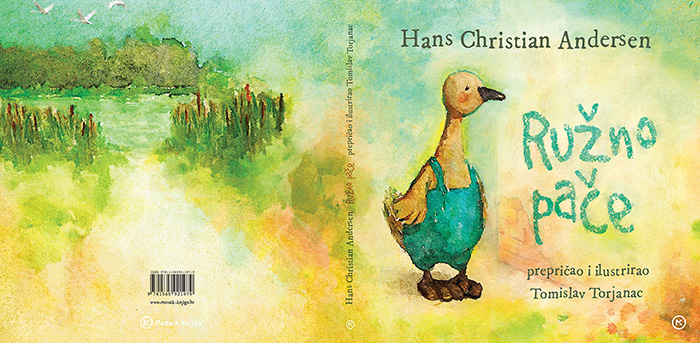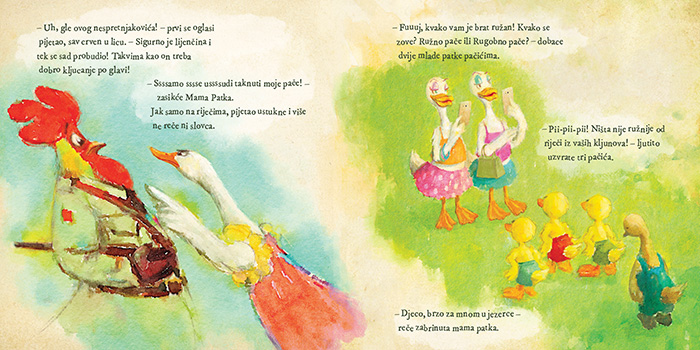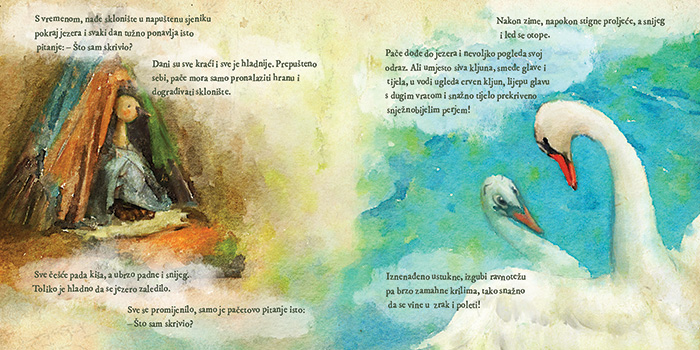


|
|
The Ugly Duckling /
Ružno pače
Hans Christian Andersen, Tomislav Torjanac (illustrator & story reteller)
Mozaik knjiga (HR) 2017.
| EN The Ugly Duckling
picture book was based on the fairy tale by H.C. Andersen, and mostly
follows its basic plot. By retelling it, I tried to point out the
problem of bullying to today’s children, that is, the importance of
accepting children who, for whatever reason, are different and in some
way the “ugly duckling” compared to their peers (they have developmental
difficulties, come from low-income families, etc.). |
|
HR Slikovnica Ružno pače
nastala je prema bajci H.C. Andersena, i većinom prati njezin osnovni
zaplet. Prepričavši je, nastojao sam današnjoj djeci ukazati na
problematiku vršnjačkog nasilja (bullyinga), odnosno na važnost
prihvaćanja djece koja su iz bilo kojeg razloga drukčija i na neki su
način “ružno pače” u odnosu na svoje vršnjake (imaju poteškoće u
razvoju, slabijeg su imovinskog statusa itd.). |

| The Ugly Duckling, front and back cover |
|
Ružno pače, naslovnica i zaslovnica |
| For
example, the ugly duckling is subjected to the rooster’s belittling
because of his appearance, as well as to the mockery of the two teen
ducklings who film him with their cell phones. In both cases, his
(non-biological) duck mother and siblings come to his defense. |
|
Na
primjer, ružno pače zbog svoga izgleda biva izvrgnuto pijetlovu
omalovažavanju te ruganju mladih patki – tinejdžerica koje ga snimaju
mobitelima. U oba slučaja njegova (nebiološka) majka-patka i braća staju
u njegovu obranu. |

| The Ugly Duckling, pages 8-9 |
|
Ružno pače, stranice 8-9 |
| The
picture book ends with a closed circle, that is, the mother duck
becomes the narrator of the story to a new generation of her ducklings. |
|
Slikovnica završava zatvorenim krugom, odnosno mama-patka postaje pripovjedač ove priče novom naraštaju svojih pačića. |

| The Ugly Duckling, pages 12-13 |
|
Ružno pače, stranice 12-13 |

|
|
|
|
|
|